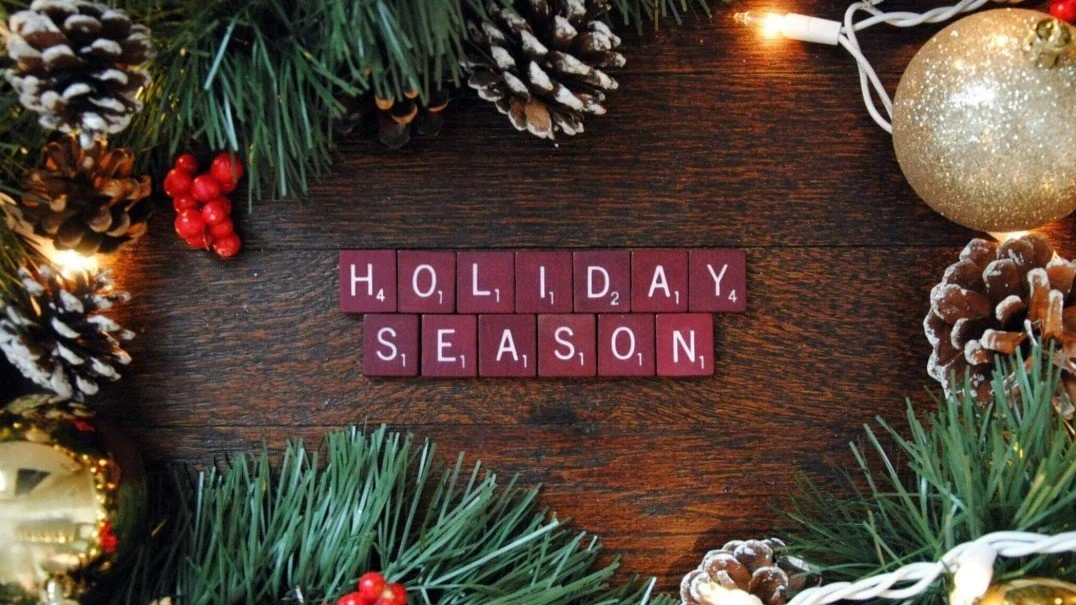A. Ghosting is the act of disappearing without explanation. It used to be more confined to casual dating. Now it happens when friends vanish, family members stop returning calls, employers fail to follow up with applicants, or employees quit without notice.
The sudden silence creates confusion, self-doubt, and frustration. Yet beneath every act of ghosting lies a deeper story of fear, avoidance, or emotional disconnection. Understanding why people ghost and how emotionally intelligent leaders and individuals can respond, reveals powerful lessons about maturity, integrity, and trust.
Why People Ghost: Six Root Causes
1. Emotional Avoidance and Fear of Discomfort
At its core, ghosting is an escape from emotional discomfort. People who ghost often fear confrontation or the vulnerability that honesty requires. Instead of saying, “I’ve changed my mind,” “I’m not interested,” or “I feel hurt or disappointed” they also retreat rather than trying to find solutions to a difficult or uncomfortable situation. They choose silence over courage and avoidance over resolution.
Healthy communication, in contrast, seeks connection and understanding. It sounds like, “I feel hurt, but I’d like to find a way to have a better relationship or friendship.” That kind of statement opens the door to dialogue, reflection, and repair, the foundations of trust.
Emotional avoidance relieves short-term anxiety but damages long-term trust. It leaves others hanging, creating unnecessary emotional harm. Leaders, friends, and partners who cannot face difficult conversations build reputations for unreliability and weaken their own credibility.
2. Lack of Emotional Maturity and Communication Skills
Many people were never taught how to communicate boundaries or express uncomfortable truths. They lack the vocabulary and confidence to navigate closure gracefully. Instead, they withdraw and hope the issue will dissolve on its own.
Ghosting becomes a (poor) coping mechanism, a way to escape feelings of guilt or fear of rejection. This immaturity often stems from insecurity, limited self- awareness, or underdeveloped empathy. Mature communication, by contrast, takes courage and compassion. It requires saying: “I value your time, but this opportunity or relationship needs improvement.”
3. Overwhelm and Self-Protection
Not all ghosting is malicious. Some people disappear because they feel emotionally or mentally overwhelmed. Life circumstances such as grief, stress, depression, burnout, can shut down their ability to communicate. They may retreat to survive, not to wound others.
However, silence still leaves damage in its wake. Healthy self-protection doesn’t require vanishing. It’s better expressed through honest communication: “I’m struggling right now and need to take a break.” That single statement preserves trust, even when disengagement is necessary.
4. Power, Control, and Insecurity
In some cases, ghosting becomes an unconscious power play. The person who ghosts holds the upper hand by withholding information and keeping others uncertain. That ambiguity fuels control and prevents closure.
This behavior often emerges from insecurity, the fear that direct communication will expose vulnerability or weakness. By disappearing, the person avoids being held accountable. But control achieved through silence is hollow; it erodes respect and integrity, especially in leadership and professional settings.
5. Digital Detachment and Cultural Normalization
The digital age has made ghosting easy. It’s become disturbingly normal. A few clicks can remove a person, delete a message, or end a relationship without consequence. Technology enables distance and convenience but also weakens empathy and healthy communication.
When communication happens primarily through screens, people forget there’s another human being on the receiving end. Emotional accountability erodes. This cultural shift has made ghosting feel acceptable, even though it leaves emotional wreckage in its path.
6. The Blame-and-Retreat Cycle
A deeper psychological pattern drives many who choose to react and ghost: blame and avoidance. When people lack the communication skills, empathy, and courage to express what they feel, they often project responsibility onto the other person. They find a way to blame another person when actually the underlying distress is in the ghost person.
Instead of saying, “I’m uncomfortable,” or “I don’t know how to handle this,” they convince themselves the other person is at fault. They rewrite the story in their mind, “You were too intense,” “You misunderstood,” or “You made me feel pressured” or “You yelled at me” (when the person never raised their voice!) They use the blame as justification for retreating.
Blaming allows them to preserve their self-image while avoiding accountability. They don’t have to examine their own fear, confusion, or disappointment; instead, they silence communication and disappear. It’s an emotionally protective move, but a destructive one.
Healthy individuals and leaders face tension directly. They say, “This feels difficult for me,” or “I need time to process.” That honesty creates space for resolution.
Ghosters, in contrast, bypass growth by withdrawing. Their silence becomes a wall that protects their ego but prevents understanding. Over time, those who rely on ghosting as a pattern never develop the resilience or empathy necessary for authentic connection. But they may have many fake relationships, from marriage to colleagues to friends. They confuse escape with strength, not realizing that avoidance keeps them emotionally immature and relationally isolated.
When Employers Ghost Applicants
Professional ghosting has become rampant. Employers, overwhelmed by applicant volume or indecisive leadership, often fail to follow up after interviews. Candidates are left hanging for weeks or months, not knowing if they’re still in consideration.
Why does this happen?
Lack of process ownership. Recruiters and hiring managers don’t coordinate communication.
Avoidance of conflict. Leaders dislike giving rejection feedback.
Overwork and disorganization. Busy teams move on to other priorities, forgetting closure.
Cultural desensitization. Ghosting has become so common that it no longer feels unprofessional.
But ghosting job applicants damages reputations. It signals a culture that doesn’t value people or integrity. In an era of employer review sites and social media transparency, silence speaks volumes. Organizations that fail to communicate lose trust, brand equity, and future talent.
Healthy organizations do better. They close loops respectfully: “Thank you for your time; we’ve chosen another direction.” This single act of courtesy demonstrates leadership maturity and empathy, traits that attract stronger candidates.
When Employees Ghost Employers
The reverse is also true. Employees increasingly quit without notice. There are no calls, no messages, no final day. Why?
Toxic workplaces. When people feel disrespected, unheard, or overworked, they disengage silently as an act of protest or self-preservation.
Fear of confrontation. Some dread uncomfortable exit conversations or retaliation.
Emotional exhaustion. Burnout drains people’s energy to communicate; walking away feels easier than explaining.
Cultural mimicry. Many employees have been ghosted by employers before, so they mirror the same behavior.
While understandable, ghosting an employer harms reputations and relationships. It closes doors, undermines professionalism, and can follow a person throughout their career. The antidote is communication. It can be brief and honest. “I’ve decided to move on effective immediately,” is difficult but responsible. It preserves dignity on both sides. Often, too employees have never been told that a two-week notice is the norm. If it is at your organization, share that with applicants.
Healthy Communication Is Not Ghosting
Healthy communication is the opposite of ghosting. It is honest, respectful, and courageous, even when uncomfortable. It’s choosing to express closure rather than leave others in confusion.
Healthy communication includes:
Clarity. Say what you mean without ambiguity.
Compassion. Deliver truth with respect and empathy.
Boundaries. Know your limits and communicate them directly.
Consistency. Align words and actions; silence undermines both.
Responsibility. Own your feelings and decisions without shifting blame.
Instead of silence, healthy communicators speak the truth for them. Small acts of transparency build maturity and trust. They turn endings into respectful transitions rather than emotional wounds.
When we practice open communication, we also model it for others. These create ripples of accountability and respect in our workplaces and relationships.
How to Respond When You’ve Been Ghosted
Being ghosted can shake your confidence. But how you respond determines whether the experience drains you or strengthens you. Here are some tips:
1. Don’t chase silence. If someone disappears, take their silence as communication. They’ve revealed their limits.
2. Protect your self-worth. Ghosting reflects the other person’s avoidance, not your inadequacy.
3. Close it for yourself. You can say, “Since I haven’t heard from you, I’ll assume you’ve moved on. Wishing you the best.” Then let it go.
4. Reflect, don’t ruminate. Ask what you’ve learned about communication, boundaries, and expectations.
5. Model what’s missing. Respond to others the way you wish you had been treated, with respect and closure.
Responding with grace doesn’t excuse poor behavior, but it keeps your integrity intact. You rise above avoidance by demonstrating maturity.
Leading with Integrity in an Age of Avoidance
Ghosting isn’t just a relational issue; it’s a cultural one. It reflects how society handles discomfort, honesty, and accountability. For leaders, it’s a chance to model something better.
Healthy organizations and individuals create cultures of clarity. They communicate even when it’s awkward. They give feedback, express gratitude, and close loops. They understand that maturity means facing, not fleeing, emotional responsibility. Courage is an action, in words, too. It’s not silence.
The most powerful leaders are those who say what others avoid saying, kindly, clearly, and consistently. They replace silence with communication, confusion with clarity, and avoidance with courage.
When we communicate instead of ghost, we show strength, respect, and humanity. We remind others, and ourselves, that integrity still matters, and silence is never a substitute for truth.























